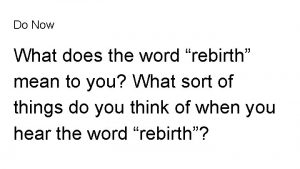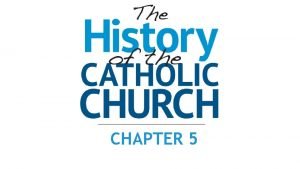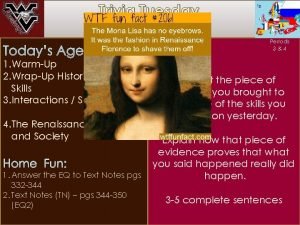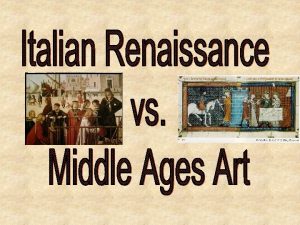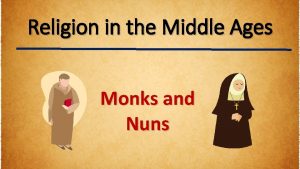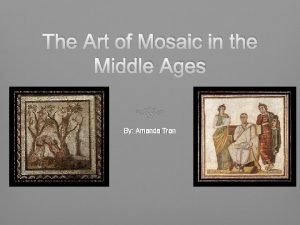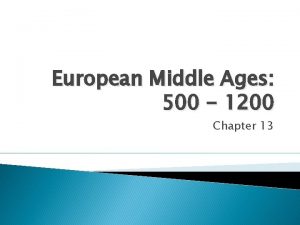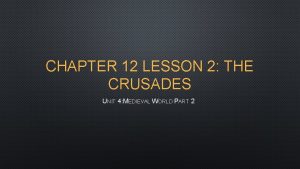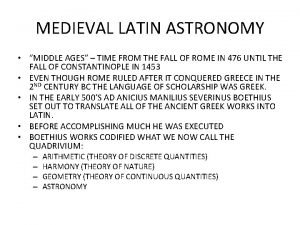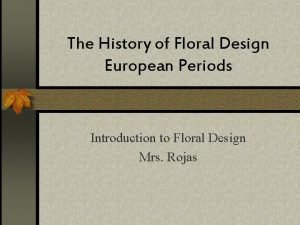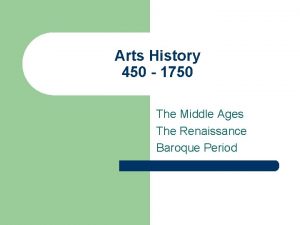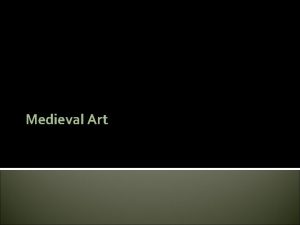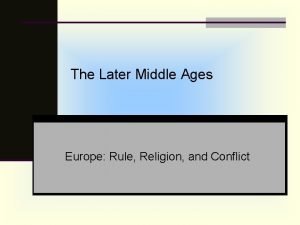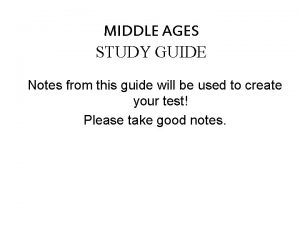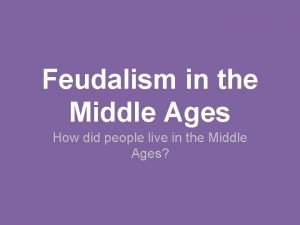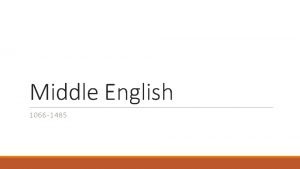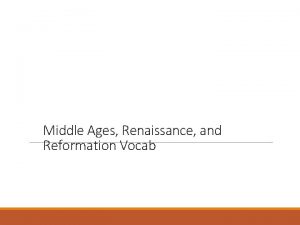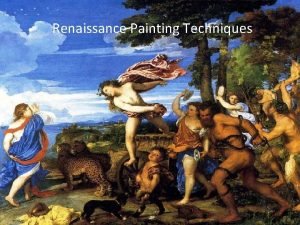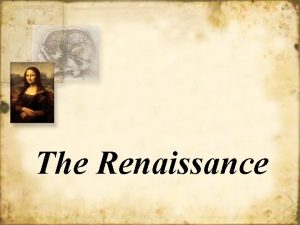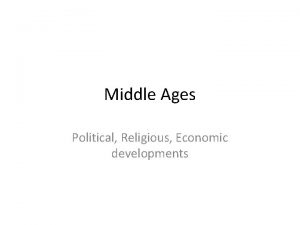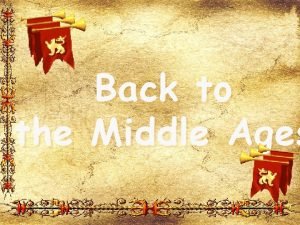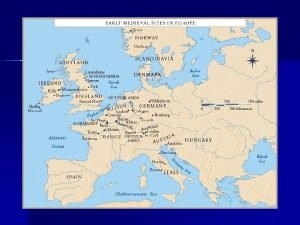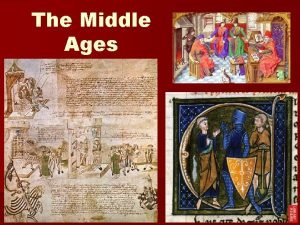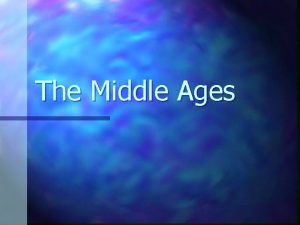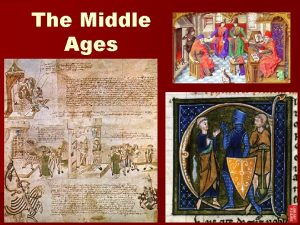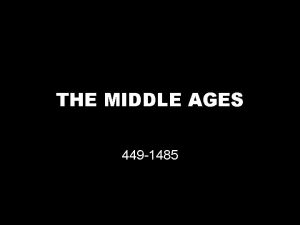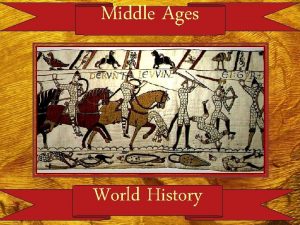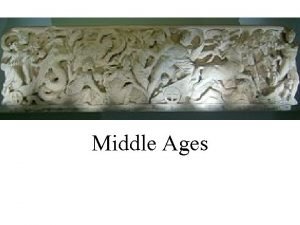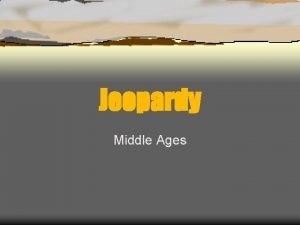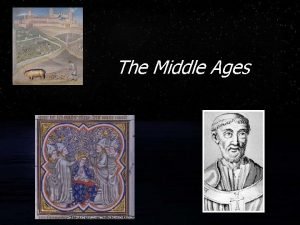RENAISSANCE PAINTING Painting in the Middle Ages Religious























- Slides: 23

RENAISSANCE PAINTING

Painting in the Middle Ages Religious subjects (why? ) hieratic scale making saints or members of the family of God larger than ordinary or less important figures. Flat (no perspective, no shading); use of egg tempera paint Lack of individuality—fully clothed, expressionless Gold background (representing heaven’s beauty/worth) Halos around the heads of religious figures


Question: Discuss in your table groups What was the main purpose of Medieval art?

“Madonna and Child in Glory” Religious subject? Halos? Hieretic scale? Gold background? Flat? No perspective? Expressions?

Renaissance Painting Subject matter starts to incorporate non-religious elements Humans are the same size as saints/religious figures Landscapes are set on earth Use of perspective and shading (oil paints) People have expressions, the human body is presented as it is; figures are sometimes partly clothed or (later) nude Halos disappear (later) people are depicted in daily life

“Miraculous Mass of St. Martin of Tours”

“Adoration of the Shepherds”

Christ Carrying the Cross Titian 1565

Titian: Sacred and Profane Love

“The Bean Eater”

The Liberation of Sculpture David by Donatello 1430 First free-form bronze since Roman times!

Botticelli’s “Adoration of the Magi” 1475

“Adoration of the Medici”? 1. Lorenzo the Magnificent 2. Poliziano 3. Pico della Mirandola 4. Gaspare Lami (a broker who footed the bill) 5. Cosimo the Elder 6. Piero the Gouty (Lorenzo's Dad) 7. Guiliano de' Medici (Lorenzo's younger brother, later murdered in the Pazzi Conspiracy) 8. Giovanni de' Medici (younger brother of Piero the Gouty) 9. Filippo Strozzi 10. Joannis Argiropulos 11. Sandro Botticelli 12. Lorenzo Tornabuoni


Vitruvian Man Leonardo da Vinci 1492 The L’uomo universale

The Renaissance “Man” Broad knowledge about many things in different fields. Deep knowledge/skill in one area. Able to link information from different areas/disciplines and create new knowledge. The Greek ideal of the “well-rounded man” was at the heart of Renaissance education.

1. Self-Portrait -- da Vinci, 1512 Artist Sculptor Architect Scientist Engineer Inventor 1452 - 1519

vertical The Last Supper - da Vinci, 1498 horizontal Perspective!

The Last Supper - da Vinci, 1498 & Geometry

Leonardo, the Scientist (Biology): Pages from his Notebook An example of the humanist desire to unlock the secrets of nature.

Leonardo, the Inventor: Pages from his Notebook

Leonardo, the Engineer: Pages from his Notebook A study of siege defenses. Studies of water-lifting devices.
 Renaissance art vs medieval art
Renaissance art vs medieval art Dark ages def
Dark ages def Similarities between middle ages and renaissance
Similarities between middle ages and renaissance Similarities between middle ages and renaissance
Similarities between middle ages and renaissance Dark ages vs renaissance
Dark ages vs renaissance Renaissance vs middle ages
Renaissance vs middle ages Monks and nuns in the middle ages
Monks and nuns in the middle ages Dark ages mosaic
Dark ages mosaic European middle ages chapter 13
European middle ages chapter 13 Lesson 4 the late middle ages
Lesson 4 the late middle ages Astronomy in medieval times
Astronomy in medieval times Middle ages floral design
Middle ages floral design Middle ages nobles
Middle ages nobles Medieval art characteristics
Medieval art characteristics Early middle ages
Early middle ages Renaissance era floral design
Renaissance era floral design English-georgian period floral design
English-georgian period floral design Middle ages study guide
Middle ages study guide Feudal system in the middle ages
Feudal system in the middle ages High middle ages
High middle ages The middle ages 1066 to 1485 unit introduction
The middle ages 1066 to 1485 unit introduction Late middle ages timeline
Late middle ages timeline The middle ages outcome the power of the church
The middle ages outcome the power of the church Art in emerging europe
Art in emerging europe


